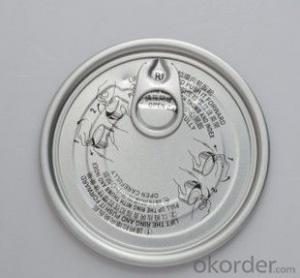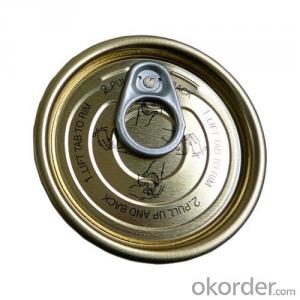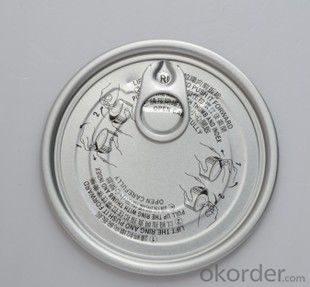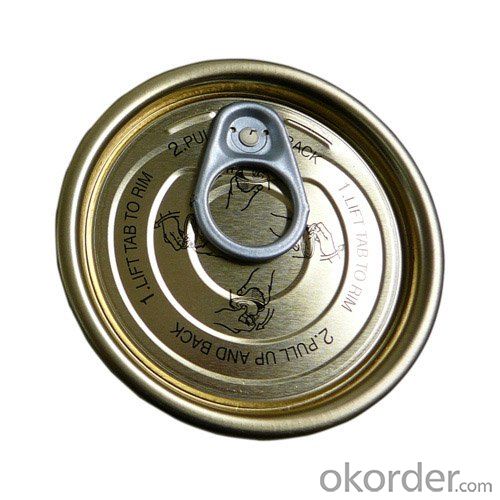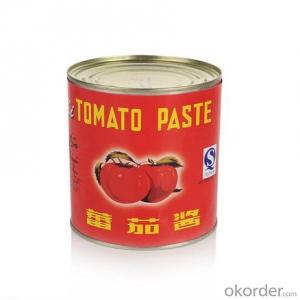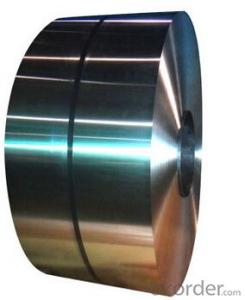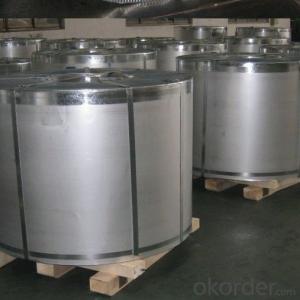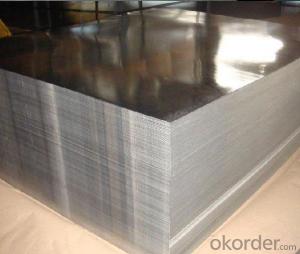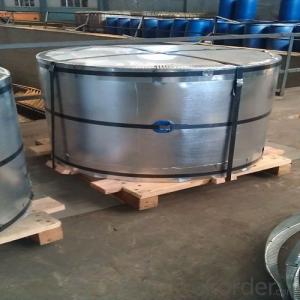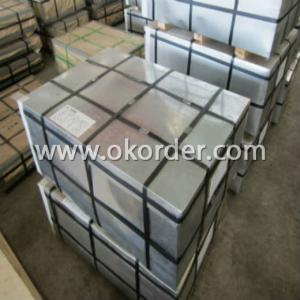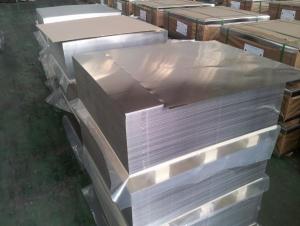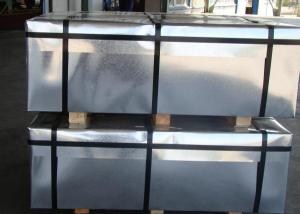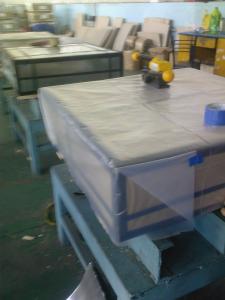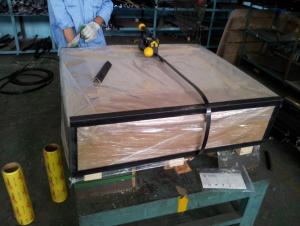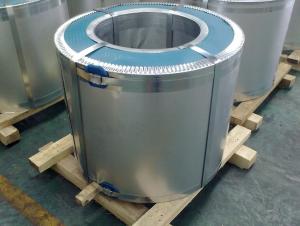Tinplate EOE For Tomato Paste Packing,69.7mm
- Loading Port:
- China main port
- Payment Terms:
- TT OR LC
- Min Order Qty:
- 1500000 PCS
- Supply Capability:
- 10000000 PCS/month
OKorder Service Pledge
OKorder Financial Service
You Might Also Like
Specifications
1) Model: 214#
2) Diameter: 70mm
3) lacquer: clear or gold or grey or white as per different sterilized food category.
Easy to Open
Just lift and pull the ring tab and the FAE will open easily. It is very user-friendly.
Convenience
The FAE can be opened with just a finger pull. Can openers are not needed.
Reliability
Eliminates the risk of end particles falling into the can during the process of opening.
| Material: | tinplate | |
| Type of Easy Open End (Lid) | Inner diameter (mm) | Lacquer (Food Degree) |
| 214# | 69.7mm | standard lacquer is gold organosol inside, can be changed |
| Tinplate EOE | Used for canned fruits or vegetables: inside lacquer should be gold phenoic epoxy | |
| Used for tomato paste: inside lacquer should be gold organosol | ||
| Used for fish or meat: inside lacquer should be aluminized lacquer | ||
Our packing
We could offer package as customers require, by carton or by wooden pallet.
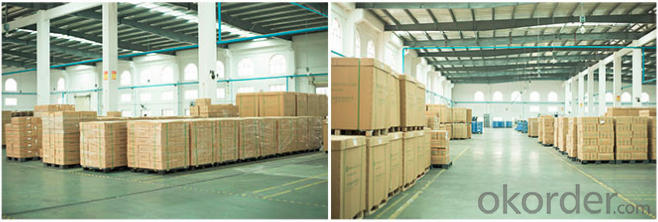
Our Workshop

FAQ
1.Q: What is the material of EOE?
We can offer both tinplate and aluminum material made EOE;
2.Q:Could you offer samples for our testing?
YES, we could offer sampler for free if needed;
3. Q:Can you make new mold with customized size I need?
YES, We can make mold for you if reach some qty.
- Q: How is tinplate tested for corrosion resistance?
- Tinplate is tested for corrosion resistance through various methods including salt spray tests, electrochemical impedance spectroscopy, and visual inspections to check for signs of rust or corrosion on the surface.
- Q: How does tinplate contribute to the containment of chemical substances?
- Tinplate contributes to the containment of chemical substances primarily through its excellent corrosion resistance properties. The tin coating on the steel substrate provides a protective barrier that prevents the chemical substances from coming into direct contact with the metal, thereby reducing the risk of chemical reactions and contamination. Additionally, tinplate's tight and secure seal ensures that no leakage or seepage of the contained substances occurs, further enhancing the containment.
- Q: What are the typical manufacturing processes for tinplate products?
- The typical manufacturing processes for tinplate products include coil cutting, cleaning and coating, pressing or stamping, forming or shaping, welding or soldering, and final finishing or packaging.
- Q: Can tinplate be used for packaging of sensitive electronic components?
- Yes, tinplate can be used for packaging of sensitive electronic components. Tinplate provides excellent protection against moisture, corrosion, and electromagnetic interference, making it a suitable material for safeguarding sensitive electronics during transportation and storage. Additionally, tinplate's durability ensures that the components remain intact and undamaged.
- Q: What is the average lifespan of tinplate products?
- The average lifespan of tinplate products can vary depending on various factors such as usage, maintenance, and environmental conditions. However, with proper care and handling, tinplate products can last for several years or even decades.
- Q: How does tinplate affect the overall product visibility?
- Tinplate can significantly enhance the overall product visibility due to its shiny and reflective surface. It adds a premium and attractive appearance to the product packaging, catching the attention of consumers. Additionally, tinplate allows for high-quality printing, enabling detailed and vibrant graphics that further enhance product visibility on store shelves.
- Q: Can tinplate be painted?
- Yes, tinplate can be painted.
- Q: What are the main trends in tinplate packaging design?
- Some of the main trends in tinplate packaging design include minimalist designs, eco-friendly packaging, retro/vintage-inspired designs, and innovative shapes and structures. Additionally, there is a growing emphasis on storytelling and creating a unique brand experience through packaging design.
- Q: How does tinplate perform in terms of magnetic properties?
- Tinplate exhibits poor magnetic properties as it is a non-magnetic material.
- Q: What are the advantages of using tinplate for medical packaging?
- Some advantages of using tinplate for medical packaging include its durability, resistance to corrosion, and ability to maintain the integrity of the packaged product. Tinplate also provides a barrier against moisture, light, and oxygen, which helps in preserving the quality and shelf life of medical products. Additionally, tinplate is recyclable, making it an eco-friendly choice for packaging.
Send your message to us
Tinplate EOE For Tomato Paste Packing,69.7mm
- Loading Port:
- China main port
- Payment Terms:
- TT OR LC
- Min Order Qty:
- 1500000 PCS
- Supply Capability:
- 10000000 PCS/month
OKorder Service Pledge
OKorder Financial Service
Similar products
Hot products
Hot Searches
Related keywords
